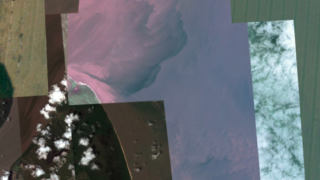
TeleGuaiana 2019
digital video, 9’25”
also showing on www.teleguaiana.com
Courtesy of the artist

Untitled 2020
digital video, 2’32”
Courtesy of the artist
Appropriating material from historical archives and contemporary media, Niccolò Moronato analyses visual and linguistic mechanisms to reveal the underlying formations of meaning that configure consumerist culture and show glitches in the algorithm. ‘Rethinking Nature’ present two works from Getting Compromised/Guaiana Toscana, a research project that explores links between the structuring of the international financial system and imperial appropriation of natural resources and land, while also exposing the fiction of a purely white Renaissance and its role in the fabrication of ideas of modern Italianness. TeleGuaiana references the 1608 Thornton Expedition sent from the port of Livorno by the Grand Duke of Tuscany Ferdinand I De’ Medici to explore possibilities for a colony in the present day French Guyana. Through the paintings of Agostino Brunias, the TV sketches of French Caribbean singer Henri Salvador and the Cecchi Gori cinema productions jingle familiar in households across Italy, the zapping narration of this story brings forth the relations connecting De’ Medici’s aspirations to the neoliberal imaginary of fiscal paradises. Untitled unveils the visual apparatus of a colonial relationship to land. It records the progression of weather satellite images of French Guyana from 1969 to today, revealing how the technological eye replicates the settler vision of the occupation and possession of land and picks out elements of infrastructure as point of reference.
Artist statement
Because of the eventual failure of the whole Medici project, I see the Tuscan Guyana as an incompiuto, an unfinished work that invites us to inquire into its preparatory drawing and into the forces and events that led to the colonial attempt: a weft of less-detectable forms and instruments of colonialism perfected by a few Italian States through finance, cartography, and the arts, which allowed them to take part in the colonization of the New World without the need to become settlers. These invisible forms of appropriation have been making it seem logical to objectify, measure, and control lands, people, and cultures for centuries. They run in the background of our minds. They are an ideological mainframe replicating itself in the thoughts and actions of people, machines, and corporations, hiding behind the TV news, the commercials, and the late-night music shows of a society that has irremediably compromised the possible futures of all human and non-human beings.